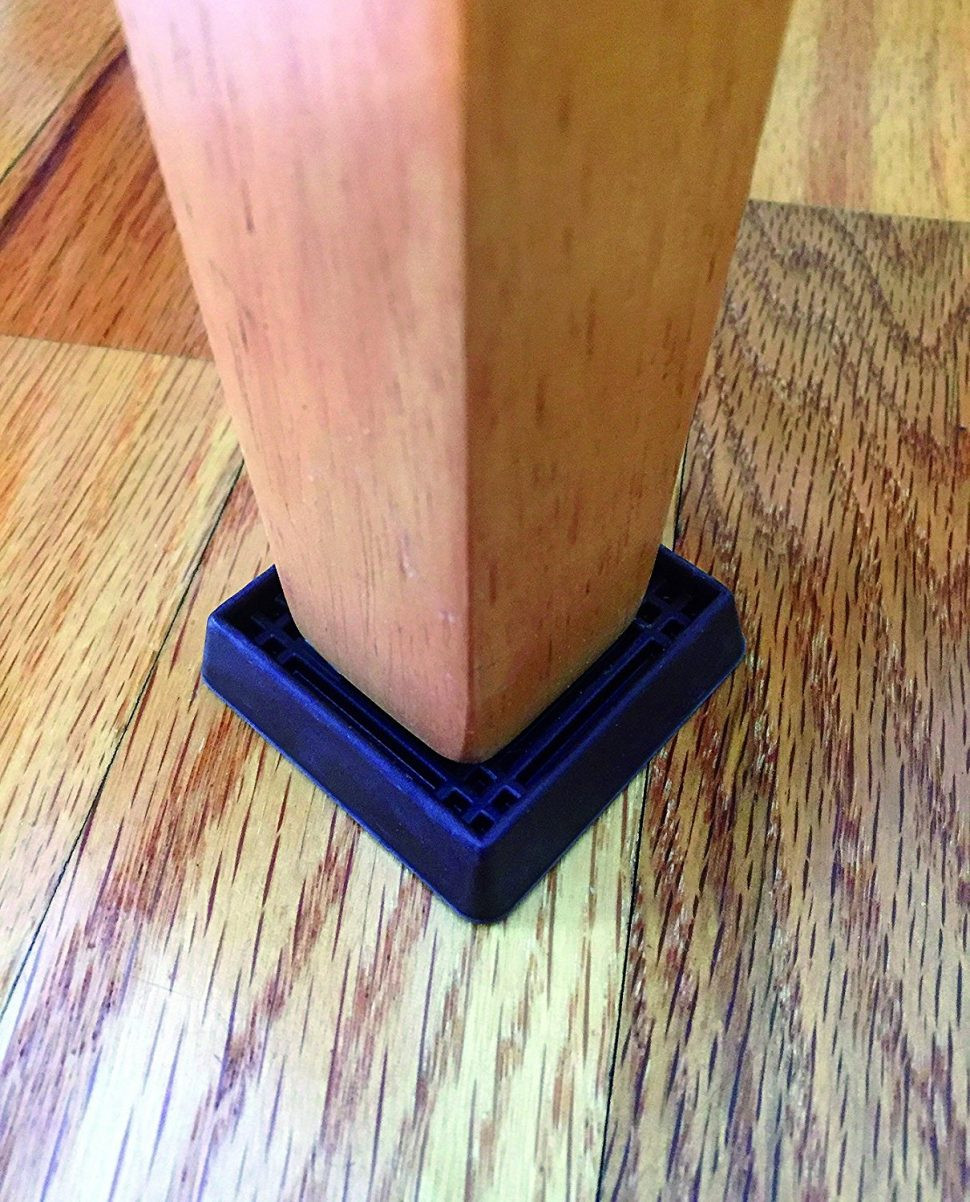Imagine this: you’re settling into your cozy living room, finally ready to relax after a long day. You reach for your coffee table for your favorite book, only to find it’s inexplicably halfway across the room. This is the frustrating reality of furniture sliding on hardwood floors, a common and often overlooked issue. But don’t despair! This guide will equip you with the knowledge and solutions to finally conquer this slippery situation and prevent it from happening again.

Image: www.rocktherm.com
Hardwood floors are beautiful and bring a touch of elegance to any home. But their smooth surfaces can become a battleground for furniture stability, especially during those frantic moments when you’re trying to move furniture quickly or during sudden jolts. Luckily, there are several tried-and-true methods to keep your furniture firmly rooted in place. We’ll explore the science behind furniture movement, delve into various solutions, and empower you to choose the best approach for your unique needs.
Understanding Furniture Movement on Hardwood Floors
The culprit behind furniture sliding on hardwood floors is friction. Friction is the force that opposes motion between two surfaces in contact. Smooth surfaces, like those found on hardwood floors and the bottom of furniture, have low friction, meaning they easily slide against each other.
Several factors contribute to furniture movement:
- Floor Finish: Polished or waxed hardwood floors have a smoother surface, leading to reduced friction and greater sliding.
- Furniture Material: Unfinished or smooth-bottomed furniture poses a greater sliding risk compared to rougher surfaces.
- Weight Distribution: Heavy furniture with a wide base is less prone to sliding than lighter pieces with narrow bases.
- Environmental Factors: Factors like humidity, temperature changes, and even vibrations can influence the friction between the furniture and the floor.
Preventative Measures: The Foundations of Furniture Stability
Now that we understand the root cause, let’s explore some preventative measures that can create a more friction-filled environment for your furniture.
-
Protect your Floors: A well-maintained hardwood floor is crucial. Dusting and regular cleaning help to remove debris that can reduce friction. Avoid over-polishing your floors, as it can actually make the surface too smooth.
-
Furniture Pads and Felt: Simple Solutions for Friction: One of the most straightforward solutions is using furniture pads or felt pads. These inexpensive options are available in various sizes and materials. They increase friction between the furniture legs and the floor, significantly reducing sliding.
-
Non-Slip Mats and Runners: For larger furniture pieces, consider using non-slip mats or runners. These provide a more substantial layer of friction, effectively anchoring the furniture in place.
-
Grip Tape: A Budget-Friendly Option: A more budget-friendly option is using grip tape. This adhesive tape has a textured surface that provides excellent friction. Apply grip tape to the bottom of furniture legs or to the surface of the hardwood floor under the legs.
Advanced Tactics: Taming the Most Slippery Situations
For those persistent sliding issues, we’ll explore more advanced techniques that can provide robust stability.
-
Rubber Stoppers: Strategic Placement for Enhanced Stability: Rubber stoppers are an excellent option for furniture with smooth legs. These durable stoppers create a more stable base, especially on polished floors.
-
Furniture Grips: A Secure Grip for All Surfaces: Furniture grips offer a secure grip by utilizing tension or suction to hold furniture in place. They work exceptionally well on heavier furniture and can be a great option for those concerned about damaging floor finishes.
-
Furniture Anchors: A Robust Solution for Maximum Stability: For extreme cases, consider furniture anchors. These devices are specifically designed to secure furniture to the floor. They are generally recommended for use on valuable or heavy furniture, as they are more permanent than other solutions.
-
DIY Furniture Clamps: A Creative and Budget-Friendly Approach: For a budget-friendly approach, consider DIY furniture clamps. This involves attaching a sturdy clamp, like a clothespin, to a furniture leg, providing a customized anchor.

Image: www.pinterest.com
Expert Insights: Tips from the Pros
We spoke to experienced interior designers and furniture experts to gather their insights on preventing furniture from sliding on hardwood floors. They emphasized the importance of evaluating the specific furniture and the floor surface, noting that each situation may require a slightly different approach. They also highlighted the significance of considering the frequency of furniture movement and the desired level of stability.
Keep Furniture From Sliding On Hardwood Floor
Your Next Steps
Conquering furniture sliding on hardwood floors doesn’t have to be a daunting task. Remember to carefully assess the specific needs of your furniture and floor, choose the appropriate solutions, and never hesitate to experiment with different methods until you find what works best for your home. By implementing these strategies, you can enjoy the beauty and comfort of your hardwood floors without the frustration of furniture on the move. Let the smooth surface of your floor reflect the calm and order of your space!






